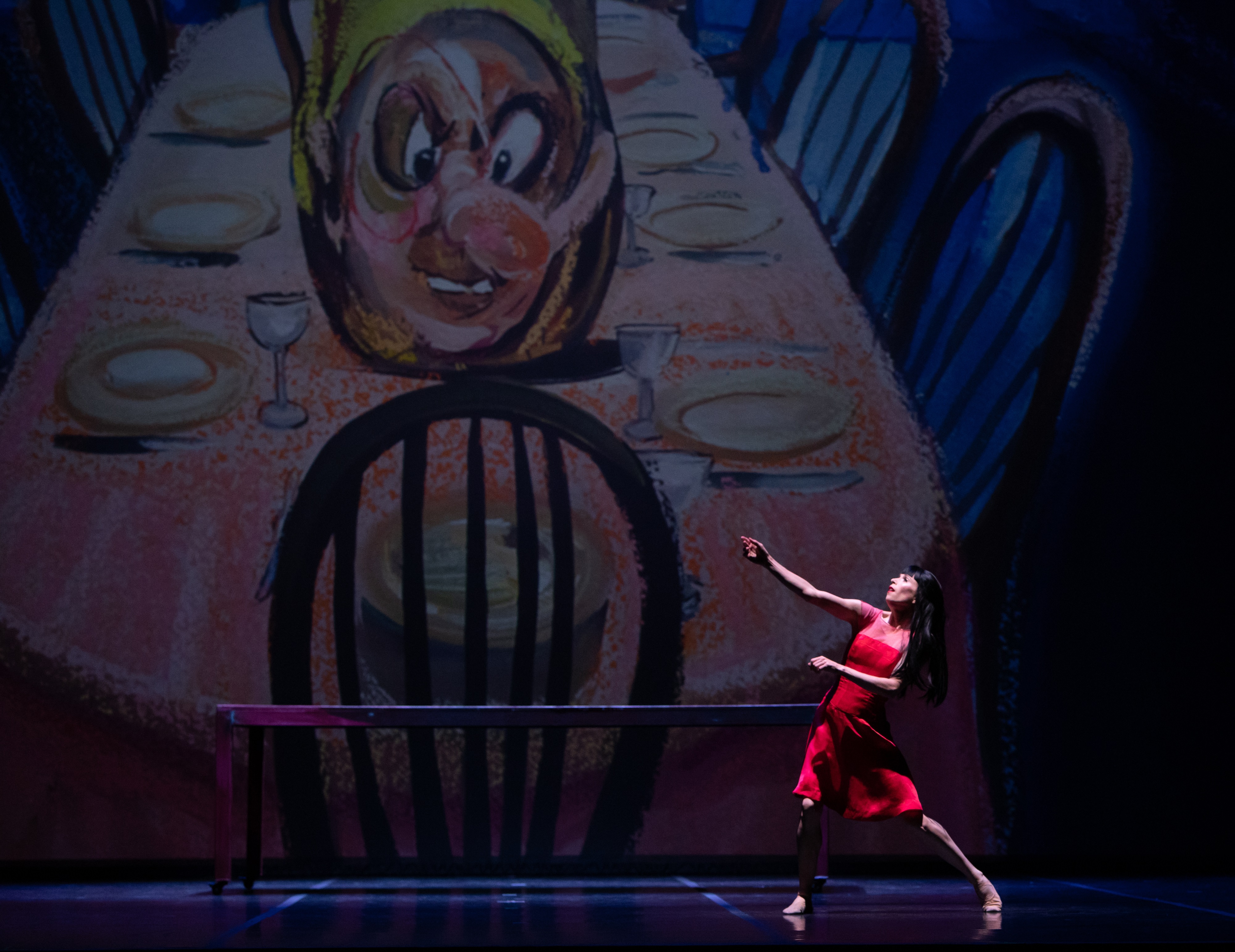
Over the last weekend in March at the Long Center in downtown Austin, Texas, the Ballet Austin presented Grimm Tales, a performance inspired by the work of Natalie Frank. In recent years, the painter has been responding to the original, gruesome fairytales and giving them a subversive feminist twist. Her commission included multiple large-scale drawings and animations to be used as set backdrops, in addition to having her drawings inspire costumes.
The relationship between visual artists and the stage has an ongoing and intertwined history, with many well-known figures designing for dance, theatre and opera productions—from Edvard Munch painting set pieces for Ibsen’s production of Ghosts in 1906, to David Hockney’s work at Glyndebourne in the 1970s, or Wolfgang Tillmans’s recent commission from the English National Opera for the 2018 production of Benjamin Britten’s War Requiem. None of these artists had previous experience working with scenography prior to their endeavours, with John Cox—the director of productions at Glyndebourne from 1972 to 1981—saying that he felt Hockney would have “an instinctive understanding of the material”. That sentiment of trust, chance and creative initiative runs throughout many of these historical collaborations, with the bond between choreographers and artists being arguably one of the most intriguing.
“The relationship between visual artists and the stage has an ongoing and intertwined history”
Any consideration of the relationship between dance and modern art is likely to begin with the Ballet Russes: an itinerant avant-garde company conceived by the impresario Sergei Diaghilev, who produced spectacular seasons of performances across Europe and the USA between 1909 and 1929. The exuberant style of the Ballet Russes was instrumental to modernism, revolutionizing ballet, but also establishing a strong aesthetic that was emulated across a constellation of art forms, fashion and interior design. Alongside working with esteemed composers (Igor Stravinsky, Claude Debussy, Erik Satie) and choreographers (Mikhail Fokine, Vaslav Nijinsky, Léonide Massine), Diaghilev commissioned numerous artists and designers to produce sets, costumes and promotional ephemera. The list reads like an encyclopaedia of twentieth-century visual culture, name-checking—among others—Pablo Picasso, Georges Braque, Henri Matisse, André Derain, Wassily Kandinsky, Nicholas Roerich, Giorgio de Chirico, Juan Gris, Natalia Goncharova, Sonia Delaunay, Léon Bakst, Joan Miró and Jean Cocteau.
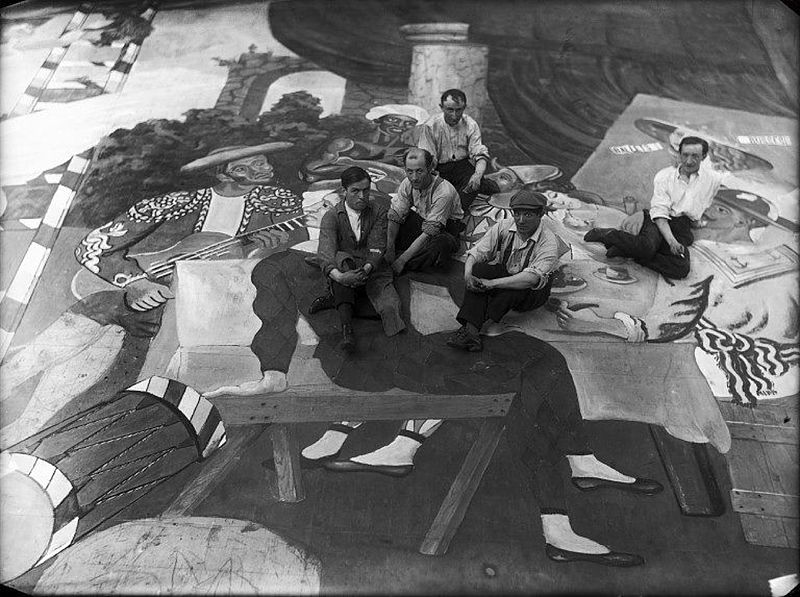
In the catalogue for the 2010 V&A exhibition Diaghilev and the Golden Age of the Ballet Russes, art historian John E Bowlt noted how artists “transcended the frames of their studio paintings to use the theatre as a laboratory of material forms”. The short-lived nature of the productions meant that artists felt liberated to be more experimental. While they may have felt it was an anomalous experience at the time, with hindsight, considering these costumes or set pieces is crucial when charting the development of their careers. For Goncharova, her formative work with the Ballet Russes provided the opportunity to develop her eclectic practice, converging her interests in Byzantine mosaics, the iconography of Russian folk art and design, futurism and neo-primitivism. Picasso worked on six productions for the Ballet Russes. In his designs for the 1917 Parade, one can trace his shift from depicting Saltimbanque circus communities (the curtain design) to exploring cubist shapes (the costumes). Guillaume Apollinaire wrote of the performance, “this alliance of painting and dance, plastic and mimic art … signals the advent of a more complete art”.
“Any consideration of the relationship between dance and modern art is likely to begin with the Ballet Russes”
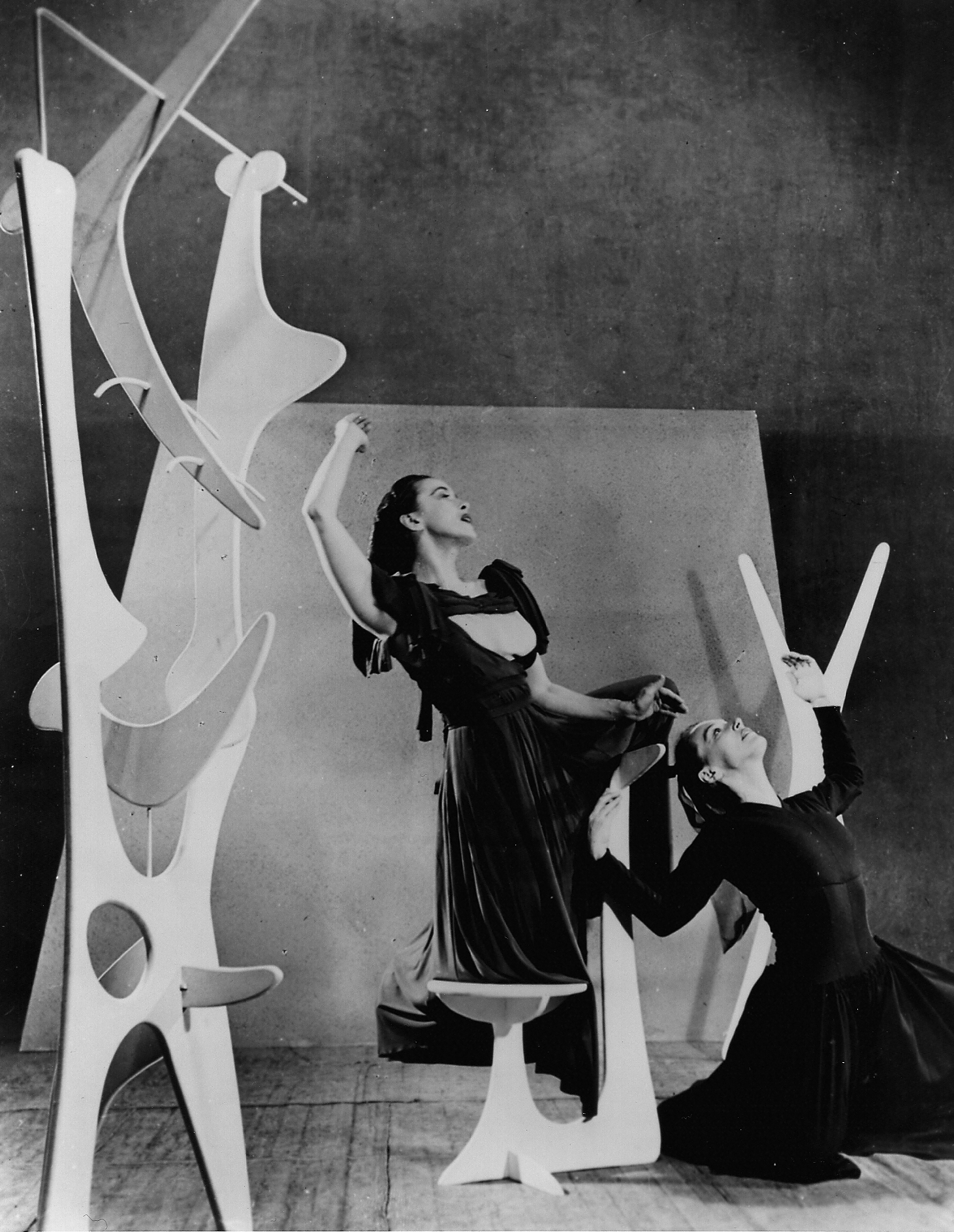
Stravinsky wrote the The Rite of Spring for the Ballet Russes in 1913. A century later, over 150 different versions have been performed across the globe. In 1930, the original choreographer Massine staged a version in America starring the modern dancer Martha Graham, who had founded her own company in 1926. In 1984, Graham returned to the score with her own interpretation. Graham’s style—the movement of contraction and release now known as the Graham technique—was grounded in channelling the raw primal intensity of human experience and emotion. This was mirrored by the sparse design of her sets, usually favouring an empty stage, until her first collaboration with the sculptor Isamu Noguchi for Frontier (1935). He would design twenty sets over the next thirty years, which were symbolic rather than decorative, to enhance the dancers’ movement. “With Martha, there is the wonder of her magic with props. She uses them as an extension of her own anatomy,” he wrote in his autobiography. Noguchi and Graham shared values about mythology, ritual, poetry and minimalism. Their relationship was a creative platonic ideal, an extension of one another with an unspoken shared language.

A particular dancer in an early iteration of the Martha Graham Company would go on to become one of the most influential and pioneering choreographers to date: Merce Cunningham. In 1953, he left Graham to form his own company. His visionary practice similarly embodies Bowlt’s positioning of Diaghilev’s stage as “a laboratory for material forms”. Over seven decades, Cunningham worked expansively and generously with numerous visual artists, composers, musicians, filmmakers and dancers, from his lifelong partner John Cage, to Robert Rauschenberg, Jasper Johns, Robert Morris, Bruce Nauman, Nam June Paik, Yvonne Rainer, Frank Stella, Andy Warhol, Trisha Brown, Charles Atlas and Tacita Dean.
Cunningham and Cage believed that composed music and choreographed dance could exist separately within one performance rather than needing to be related to one another, and this methodology filtered into his artistic collaborations, inviting individuals to create without constraints. Rauschenberg—who said their relationship was founded on “carte-blanche trust”—worked on numerous set designs throughout his life, which often correlated with his artistic output. His collapsible décor for Minutiae (1954) was his first freestanding “Combine”: a term he coined to describe the hybridized works that blended painting, collage, fabric and sculpture. Other sets exemplified his later interests in kinetics, found objects, assemblage and montages of disparate images. “I’ve always been envious of dance in the sense that it’s so immediate,” he said in 1996, “[Collaboration] involves the minds and talents of other people … Everybody is the material.”
Rauschenberg met the dancer and choreographer Trisha Brown through Cunningham in the late 1960s. Akin to Noguchi and Graham, they felt their work had unspoken affinities and unconscious correspondences. Brown had previously rejected traditional settings for her performances, favouring lofts, rooftops, streets, churches, galleries and parks. Glacial Decoy (1979) marked her first performance in a proscenium setting, with Rauschenberg creating 620 slides of black-and-white photographs projected across large screens spanning the back of the stage. In 1980, Fujiko Nakaya worked on a fog installation for Brown’s Opal Loop / Cloud Installation #72503, using the techniques developed for her fog sculptures. Donald Judd created translucent, coloured backgrounds in red, yellow and blue for Newark (Niweweorce) (1987) that rose and descended during the performance.
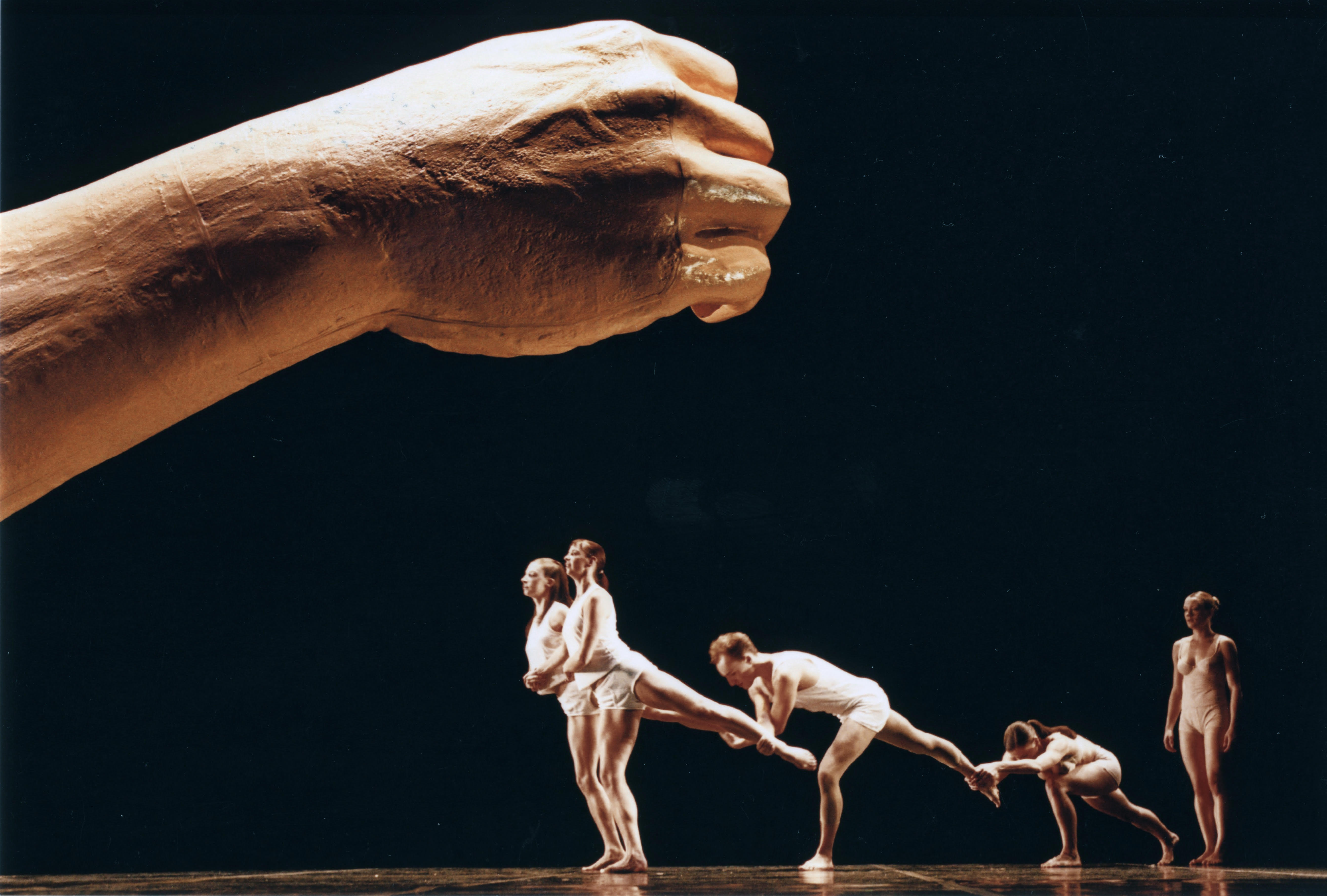
In the early 1970s, the filmmaker and artist Charles Atlas began to work with Cunningham. They experimented with video and choreography, staging dances to be experienced via the medium of television. Through the dancer and choreographer Karole Armitage, Atlas met Michael Clark—the punk “enfant terrible” of British dance—as Clark and Armitage had been introduced at a summer school run by Cunningham and Cage. Atlas has designed custom projections and lighting for Clark’s shows and commissions since the early 1980s, in addition to making the iconic fictionalized documentary Hail the New Puritan in 1986. Returning to London after a break from dance in the mid 1990s, Clark briefly worked for Sarah Lucas, “helping her in her studio, sticking cigarettes on things for her”. In 2001, he commissioned Lucas to design the set for Before and After: The Fall, and she created a giant mobile structure of a masturbating arm that interacted with (and disrupted) the dancers on stage. “I did a whole show in Berlin that dealt with wanking,” she explained in an interview. “I realized that wanking is mechanical, as regular as a clock. Sex is all about rhythm and time … dance is about the same thing.”
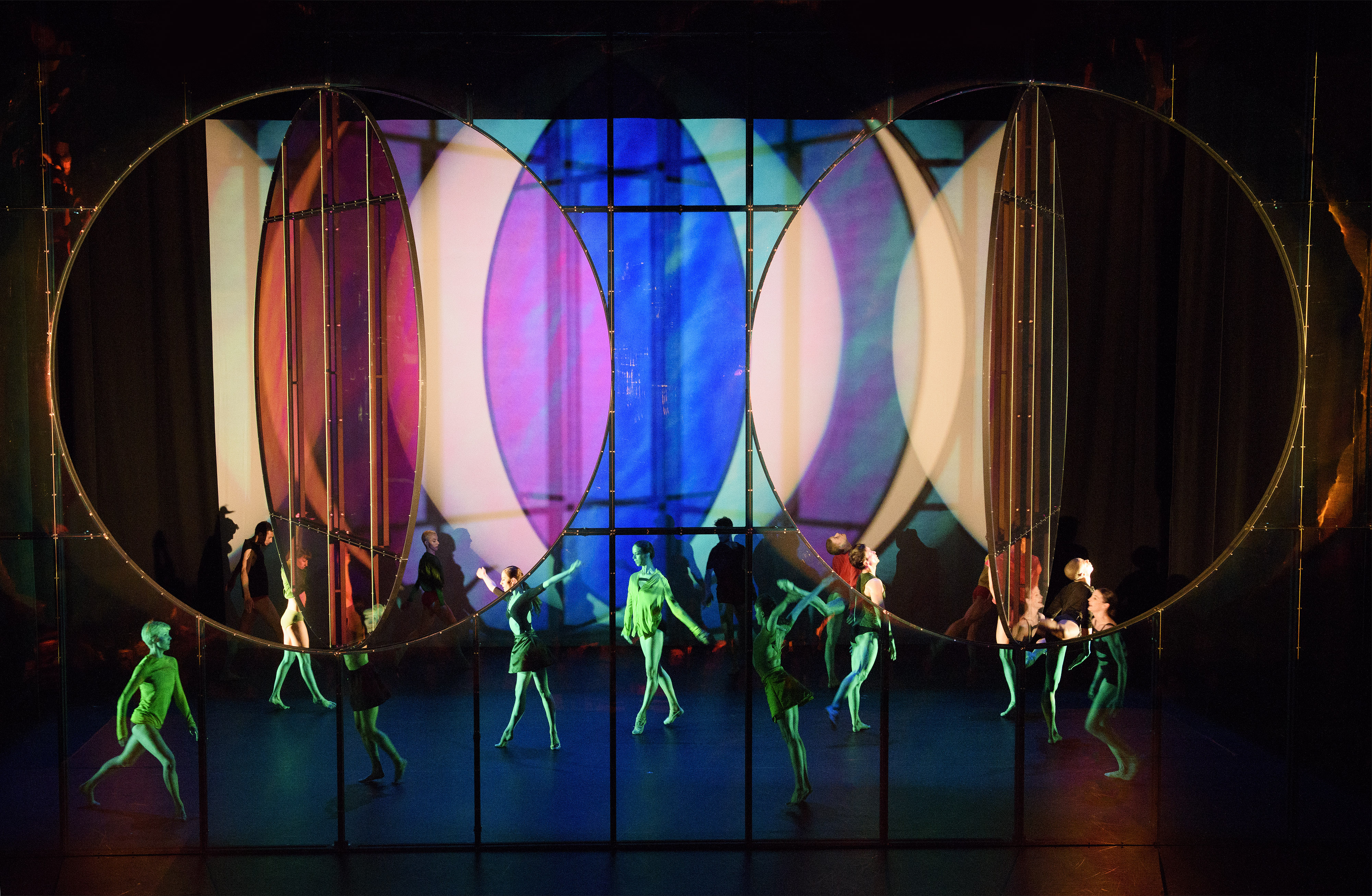
Alongside Atlas, Clark’s other longstanding collaborator is the fashion designer Stevie Stewart. The historic relationship between dance and fashion is another fertile angle, with Chanel creating costumes for the Ballet Russes, or contemporary choreographers forming bonds with designers today, such as Dries Van Noten designing costumes for Anne Teresa De Keersmaeker, Hussein Chalayan working at Sadlers Wells in 2015, Alexandra Bachzetsis’s collaborations with Ottolinger’s Cosima Gadient, or Chopova Lowena’s relationship with Gery Georgieva. Here in the UK, the “pas de deux” between choreographers and artists has become the norm, with Akram Khan collaborating with Anish Kapoor for Kaash in 2002, or Wayne McGregor working with Olafur Eliasson on the visual concept for Tree of Codes in 2014 and later with the collective Random International on producing the immersive installation for +/- Human in 2017. In our contemporary moment, where there is so much cross-pollination across all the art forms and a genuine celebration of multidisciplinary practices, it seems that this relationship will continue to endure and evolve.





